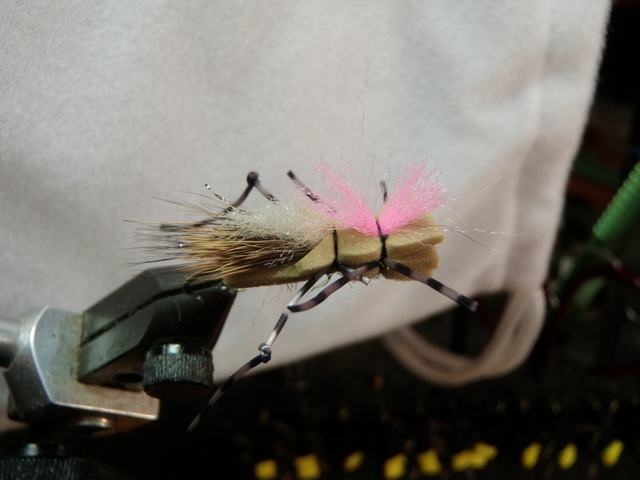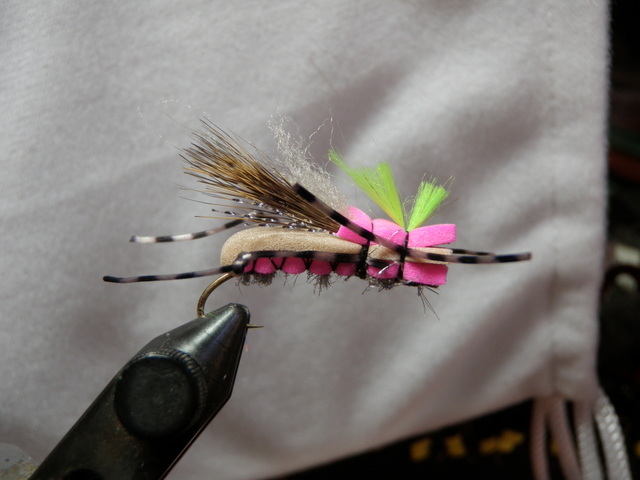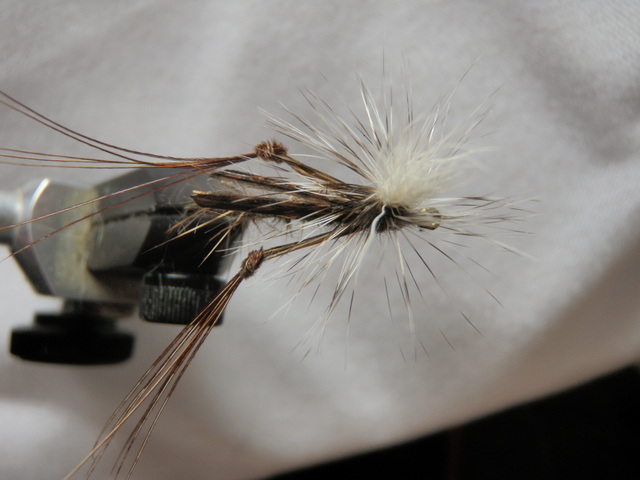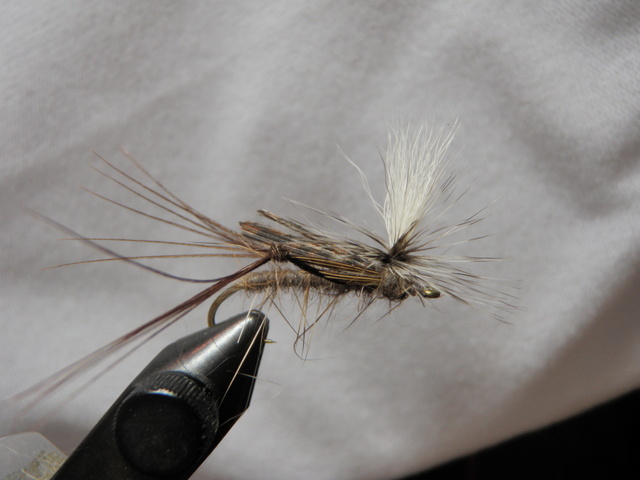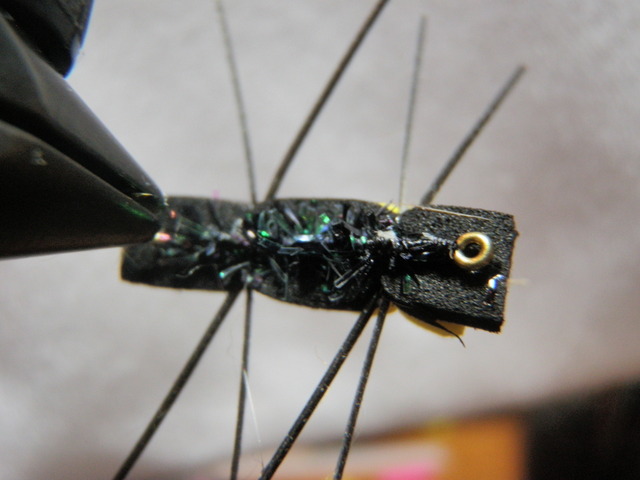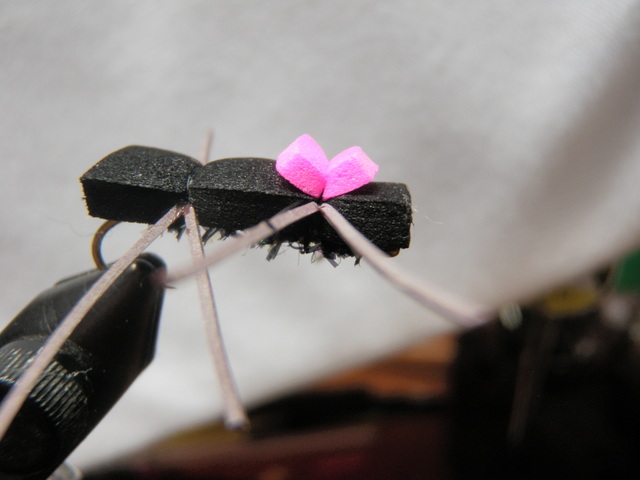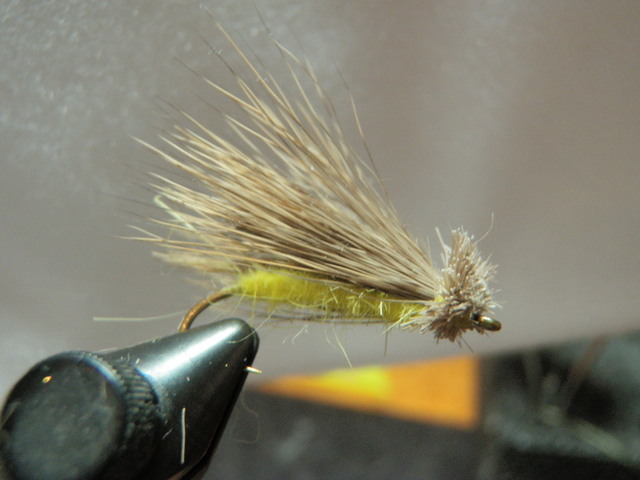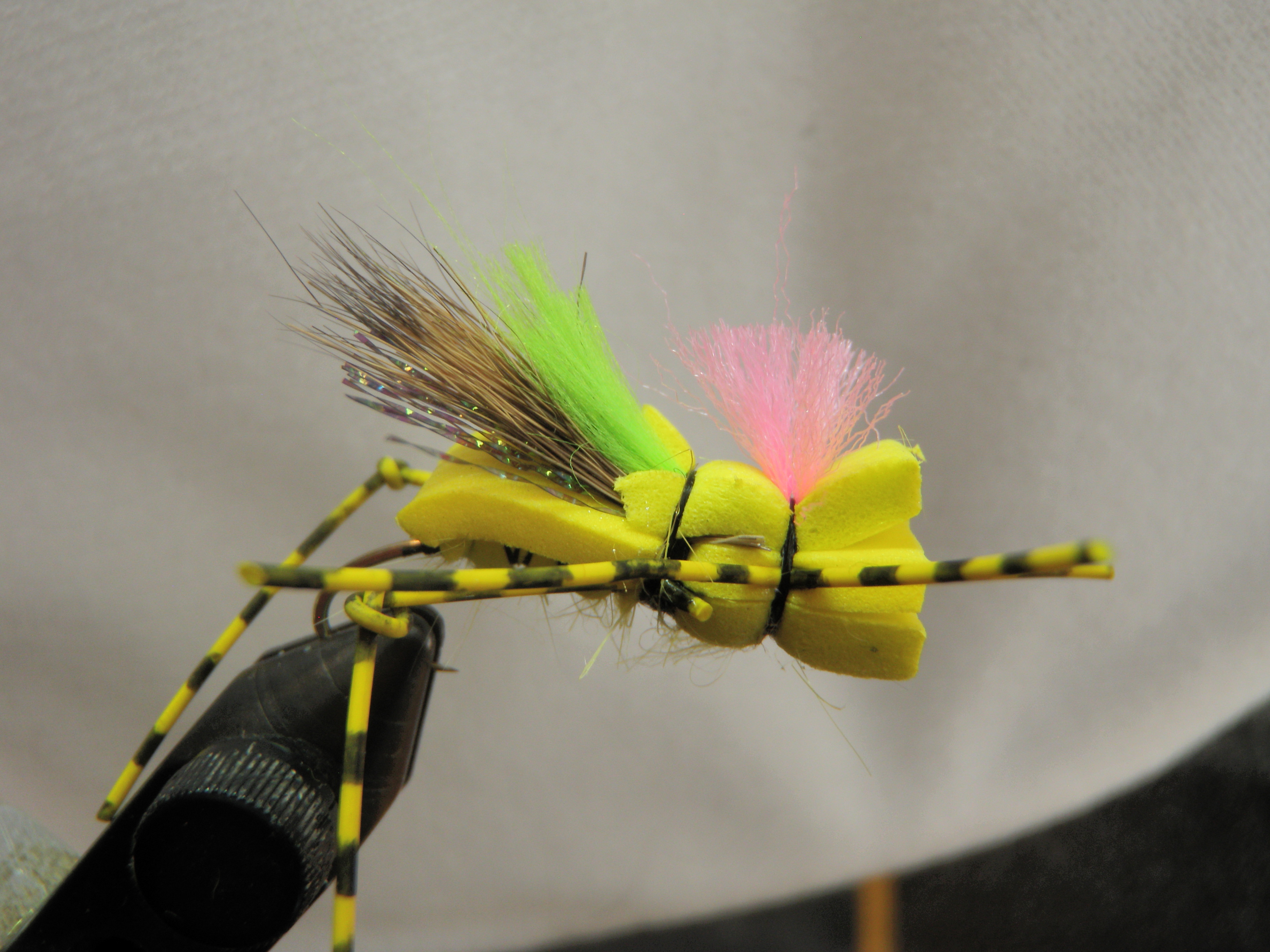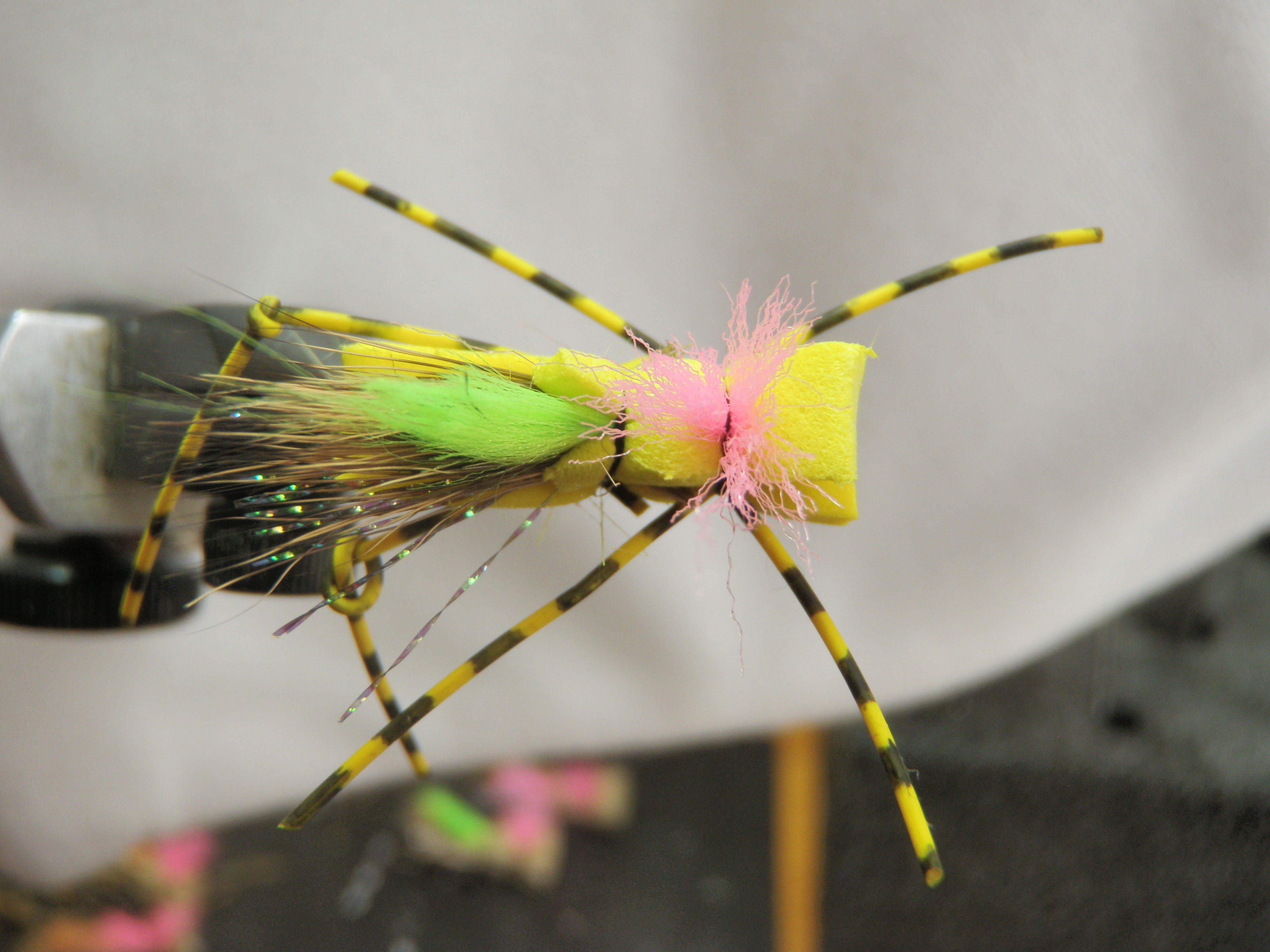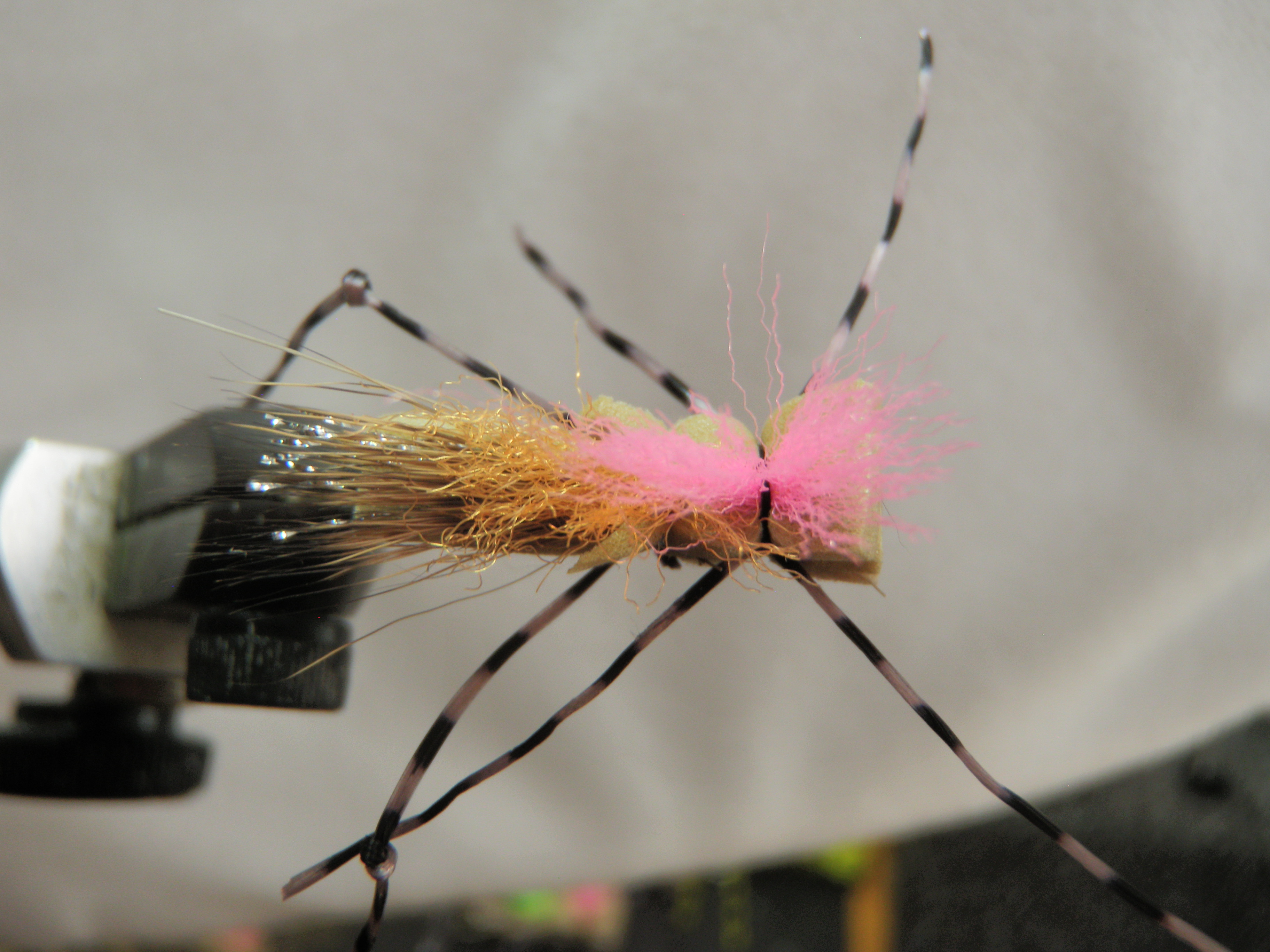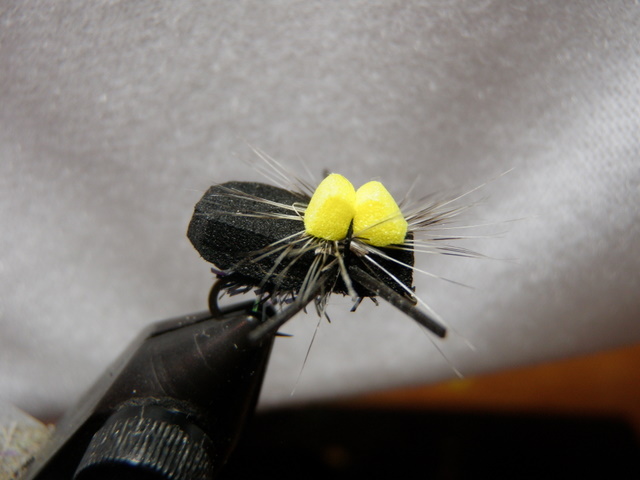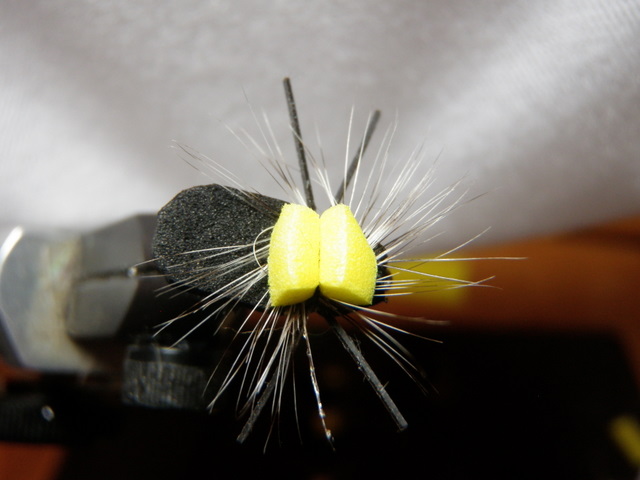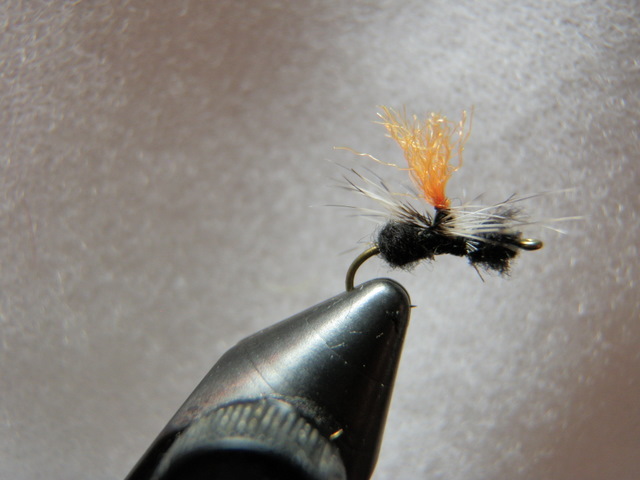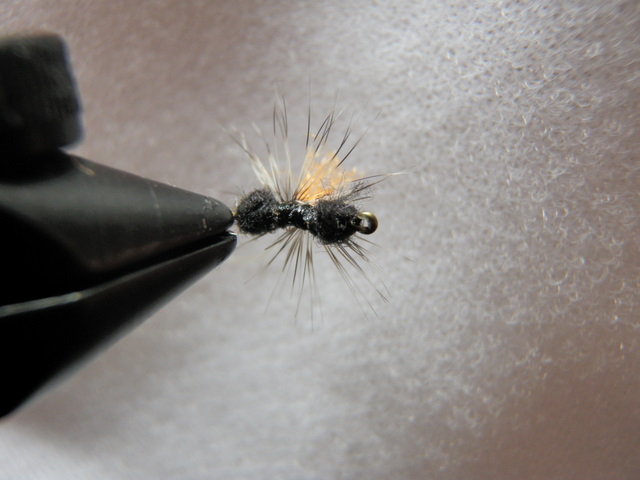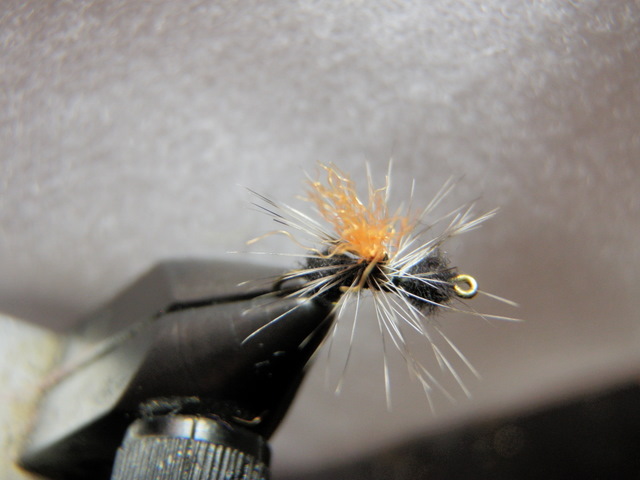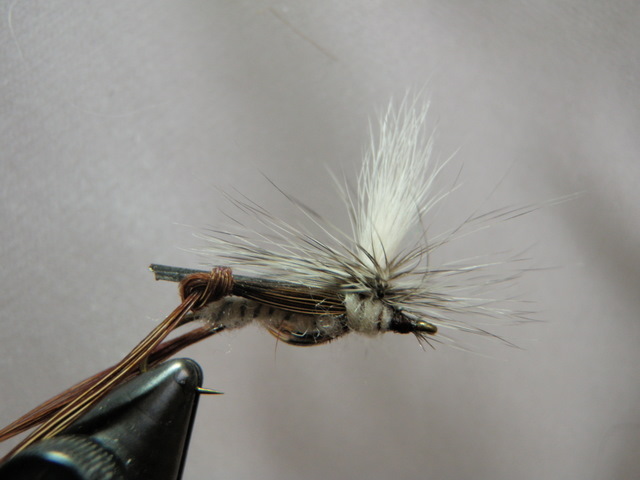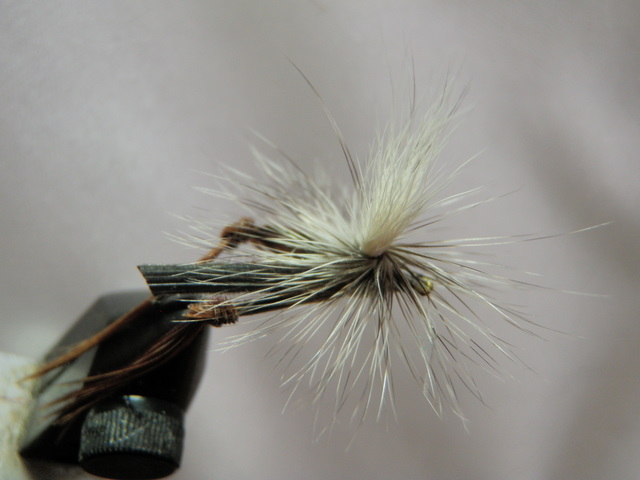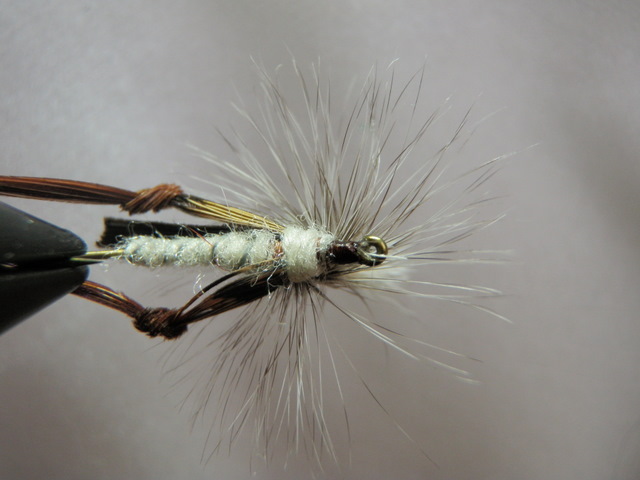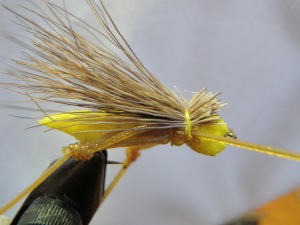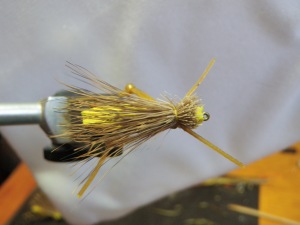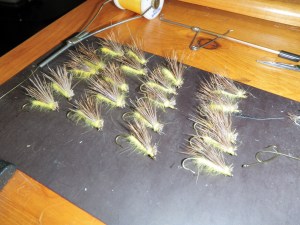Pool Toy 02/14/2014 Photo Album
As I mentioned in my recent post on the Chernobyl Ant, I continually search for new hopper patterns that are more buoyant than a Letort hopper but also equally effective. So far I haven’t been very successful, but a guide I used in 2012 recommended a pool toy as the best hopper pattern. I tied some prior to the 2013 season and experimented with the resulting foam grasshoppers during the past season. Pool toys are definitely more buoyant, and I liked the ability to suspend large beadhead nymphs from these large foam creations. Pool toys are also highly visible due to the indicator and light color foam.
Unfortunately I’m not yet willing to say that pool toys catch as many fish as Letort hoppers. I probably didn’t fish a pool toy as much as I should have due to a lack of confidence in a new fly, and perhaps that explains the limited success. I can remember a few occasions when the size 10 yellow pool toy produced as well as a few cutbows gulping a pink version on the White River.
Because of the buoyancy and visibility, I decided to tie a few more pool toys in 2014 to add to my remaining collection from 2013. I made three tan pool toys and one pink. I’ve settled on barred sexilegs as the preferred material for appendages. I also used gray ice dub as the underbody as outlined in the material recipe from the originator, Andrew Grillos; whereas, I used a rabbit fur dubbing for the underbody on the versions I tied in 2013.
I will try to recommit to pool toys as my hopper imitation of choice in 2014. I will particularly try to test them in August and September, the prime grasshopper fishing months in Colorado.

